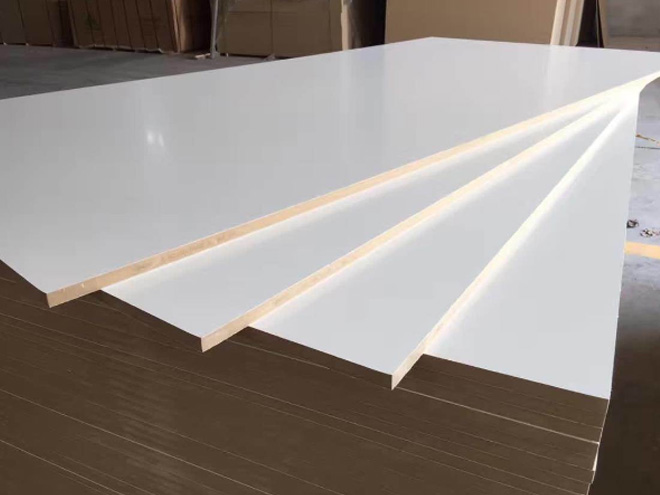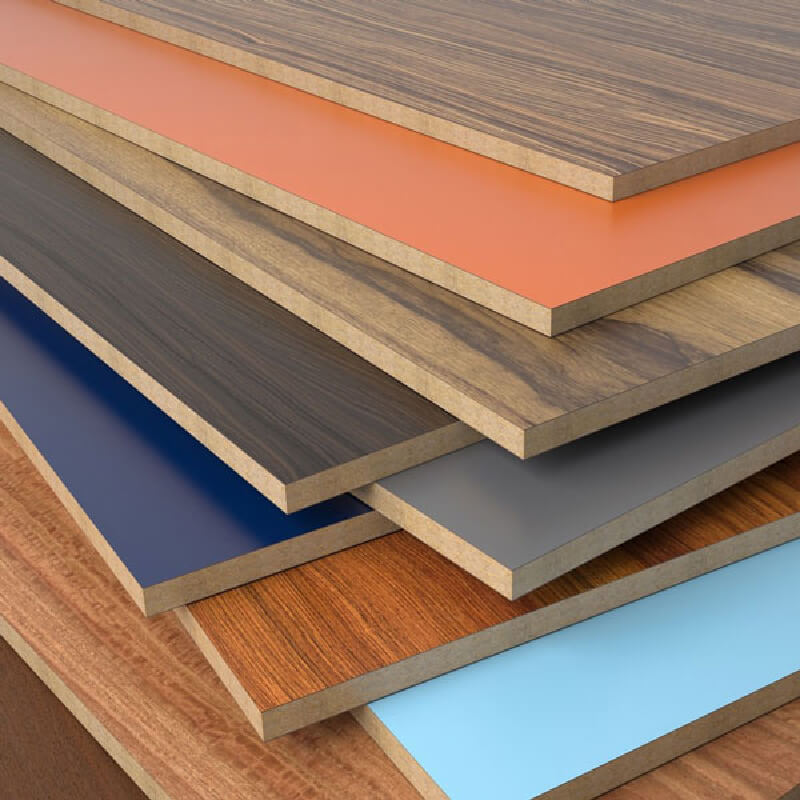Melamine Faced MDF (Medium-Density Fibreboard): A Comprehensive Guide
Melamine Faced MDF (Medium-Density Fibreboard), Melamine Faced MDF (Medium-Density Fibreboard) is a versatile and widely used material in the construction and furniture industries. Known for its durability, affordability, and aesthetic appeal, Melamine Faced MDF has become a popular choice for both residential and commercial applications. This article will delve into the various aspects of Melamine Faced MDF, including its composition, benefits, applications, and frequently asked questions.

What is Melamine Faced MDF?
Composition
Melamine Faced MDF is a type of engineered wood product made from wood fibers, wax, and resin. These components are combined under high pressure and temperature to form a dense, uniform panel. The surface of the MDF is then coated with a melamine resin, which provides a hard, durable, and decorative finish.
Manufacturing Process
- Wood Fiber Preparation: Wood fibers are obtained from softwood or hardwood through a process of chipping and refining.
- Blending: The fibers are mixed with wax and resin to create a homogeneous mixture.
- Pressing: The mixture is pressed under high temperature and pressure to form a dense panel.
- Melamine Coating: The surface of the MDF is coated with melamine resin, which is then cured to create a hard, durable finish.
- Cutting and Finishing: The panels are cut to size and finished according to the desired specifications.
Benefits of Melamine Faced MDF
Durability
Melamine Faced MDF is known for its durability. The melamine coating provides a hard, scratch-resistant surface that can withstand daily wear and tear. This makes it an ideal choice for high-traffic areas and heavy-use furniture.
Aesthetic Appeal
The melamine coating is available in a wide range of colors, patterns, and finishes, allowing for a high degree of customization. This makes Melamine Faced MDF a popular choice for decorative applications, such as cabinetry, wall paneling, and furniture.
Affordability
Compared to solid wood and other engineered wood products, Melamine Faced MDF is relatively affordable. This makes it an attractive option for budget-conscious projects without compromising on quality.
Easy Maintenance
The smooth, non-porous surface of Melamine Faced MDF makes it easy to clean and maintain. Regular dusting and occasional wiping with a damp cloth are usually sufficient to keep the material looking new.
Environmental Considerations
Melamine Faced MDF is made from wood fibers, which are a renewable resource. Additionally, the manufacturing process can utilize recycled wood, making it an environmentally friendly option.
Applications of Melamine Faced MDF
Furniture
Melamine Faced MDF is widely used in the production of furniture, including cabinets, shelves, tables, and desks. Its durability and aesthetic appeal make it a popular choice for both residential and commercial furniture.
Cabinetry
In kitchens and bathrooms, Melamine Faced MDF is often used for cabinetry. The material’s resistance to moisture and ease of maintenance make it ideal for these environments.
Wall Paneling
Melamine Faced MDF is also used for wall paneling in both residential and commercial spaces. The material’s smooth finish and wide range of colors and patterns allow for creative and customized designs.
Doors and Windows
The durability and stability of Melamine Faced MDF make it a suitable material for doors and window frames. It can be easily cut and shaped to fit various designs and styles.
Retail Fixtures
In retail environments, Melamine Faced MDF is used for fixtures and displays. Its ability to withstand heavy use and its aesthetic versatility make it a practical choice for these applications.
Installation and Maintenance Tips
Installation
- Cutting: Use a fine-toothed saw to cut Melamine Faced MDF to the desired size. Ensure that the edges are smooth and free from splinters.
- Drilling: When drilling holes, use a sharp drill bit to prevent chipping. It is recommended to drill pilot holes before inserting screws.
- Fastening: Use appropriate fasteners, such as screws or nails, to secure the MDF panels. Pre-drilling holes can help prevent splitting.
- Finishing: If necessary, apply edge banding or sealant to the edges of the MDF to achieve a finished look.
Maintenance
- Cleaning: Regularly dust the surface with a soft cloth. For deeper cleaning, use a damp cloth with a mild detergent.
- Avoid Moisture: While Melamine Faced MDF is resistant to moisture, prolonged exposure to water can cause swelling. Wipe up spills immediately.
- Protect from Scratches: Use coasters, placemats, and protective pads to prevent scratches and dents on the surface.
Frequently Asked Questions (FAQs)
What is the difference between MDF and Melamine Faced MDF?
MDF (Medium-Density Fibreboard) is a type of engineered wood made from wood fibers, wax, and resin. Melamine Faced MDF is MDF that has been coated with a melamine resin, providing a hard, durable, and decorative finish.
Is Melamine Faced MDF waterproof?
While Melamine Faced MDF is resistant to moisture, it is not entirely waterproof. Prolonged exposure to water can cause the material to swell. It is important to wipe up spills immediately and avoid using Melamine Faced MDF in areas with high humidity.
Can Melamine Faced MDF be painted?
Yes, Melamine Faced MDF can be painted, but it requires proper preparation. The surface should be cleaned, sanded, and primed before applying paint to ensure good adhesion.
How do I cut Melamine Faced MDF without chipping?
To cut Melamine Faced MDF without chipping, use a fine-toothed saw and cut slowly. Applying masking tape along the cut line can also help reduce chipping.
Is Melamine Faced MDF environmentally friendly?
Melamine Faced MDF is made from wood fibers, which are a renewable resource. Additionally, the manufacturing process can utilize recycled wood, making it an environmentally friendly option.
What are the common thicknesses of Melamine Faced MDF?
Melamine Faced MDF is available in various thicknesses, typically ranging from 3mm to 25mm. The choice of thickness depends on the specific application and requirements.
Can Melamine Faced MDF be used outdoors?
Melamine Faced MDF is not suitable for outdoor use as it is not waterproof and can be damaged by exposure to the elements.
How do I clean Melamine Faced MDF?
To clean Melamine Faced MDF, dust the surface regularly with a soft cloth. For deeper cleaning, use a damp cloth with a mild detergent. Avoid using abrasive cleaners or scrubbing pads, as they can damage the surface.
What are the advantages of using Melamine Faced MDF over solid wood?
Melamine Faced MDF offers several advantages over solid wood, including affordability, uniformity, and ease of customization. It is also more resistant to warping and cracking compared to solid wood.
Can Melamine Faced MDF be used for kitchen cabinets?
Yes, Melamine Faced MDF is commonly used for kitchen cabinets due to its durability, moisture resistance, and aesthetic appeal.
Conclusion
Melamine Faced MDF is a versatile and durable material that offers numerous benefits for a wide range of applications. Its affordability, aesthetic appeal, and ease of maintenance make it a popular choice for both residential and commercial projects. By understanding the composition, benefits, and applications of Melamine Faced MDF, you can make informed decisions for your next project.
Whether you are designing furniture, cabinetry, or wall paneling, Melamine Faced MDF provides a reliable and cost-effective solution. With proper installation and maintenance, this material can enhance the functionality and appearance of any space.
